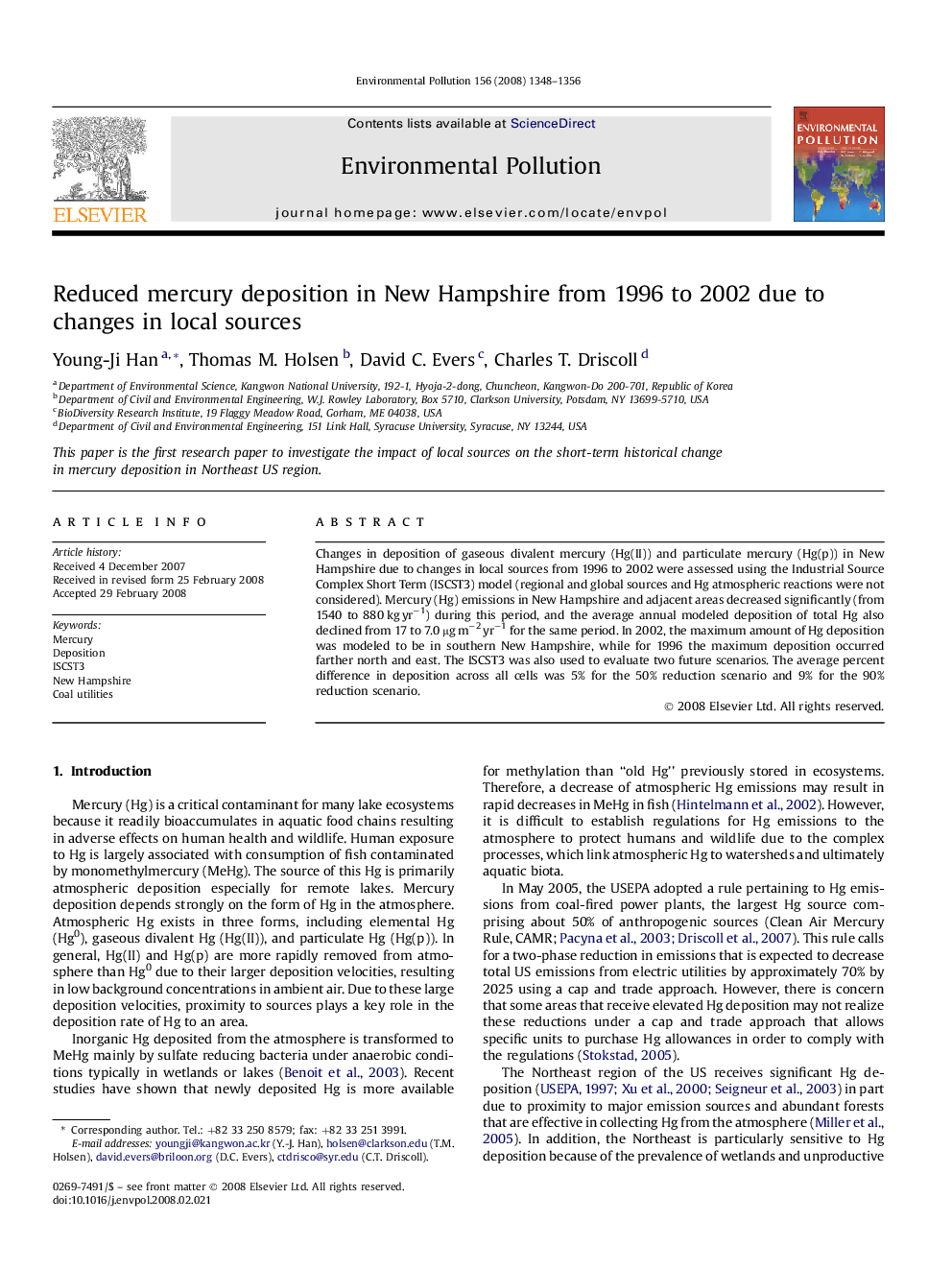| Article ID | Journal | Published Year | Pages | File Type |
|---|---|---|---|---|
| 4426283 | Environmental Pollution | 2008 | 9 Pages |
Changes in deposition of gaseous divalent mercury (Hg(II)) and particulate mercury (Hg(p)) in New Hampshire due to changes in local sources from 1996 to 2002 were assessed using the Industrial Source Complex Short Term (ISCST3) model (regional and global sources and Hg atmospheric reactions were not considered). Mercury (Hg) emissions in New Hampshire and adjacent areas decreased significantly (from 1540 to 880 kg yr−1) during this period, and the average annual modeled deposition of total Hg also declined from 17 to 7.0 μg m−2 yr−1 for the same period. In 2002, the maximum amount of Hg deposition was modeled to be in southern New Hampshire, while for 1996 the maximum deposition occurred farther north and east. The ISCST3 was also used to evaluate two future scenarios. The average percent difference in deposition across all cells was 5% for the 50% reduction scenario and 9% for the 90% reduction scenario.
